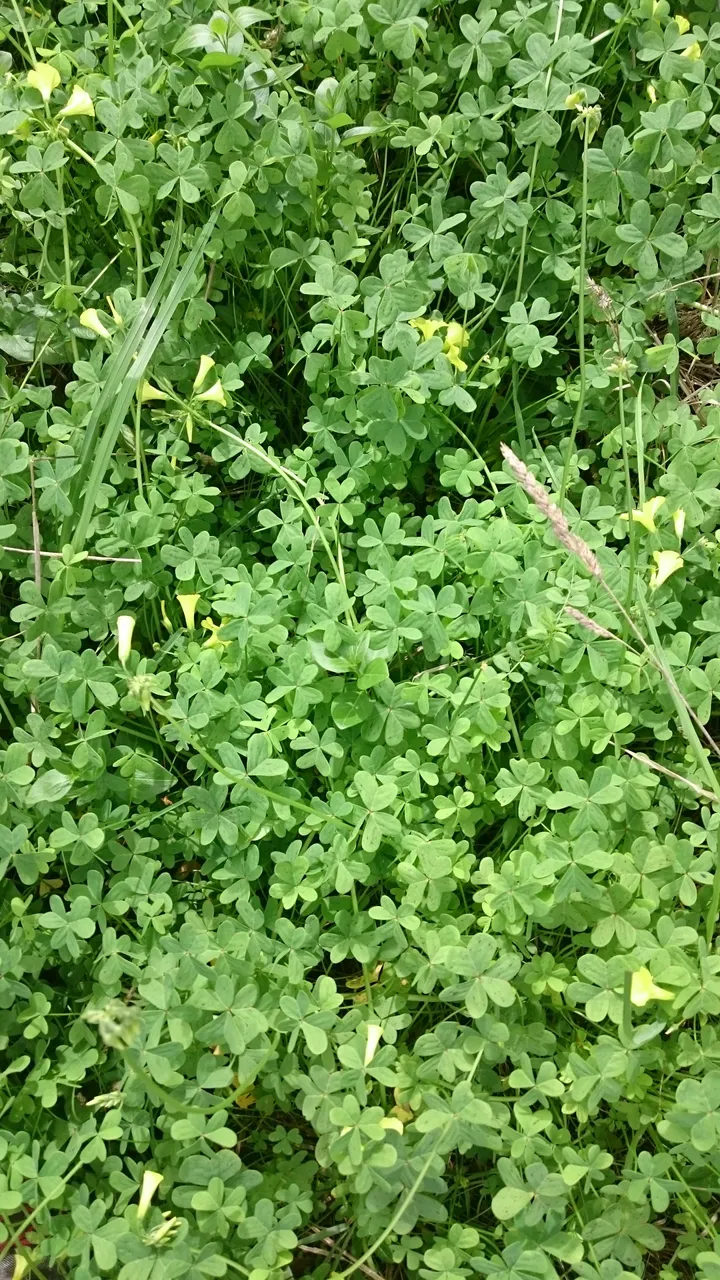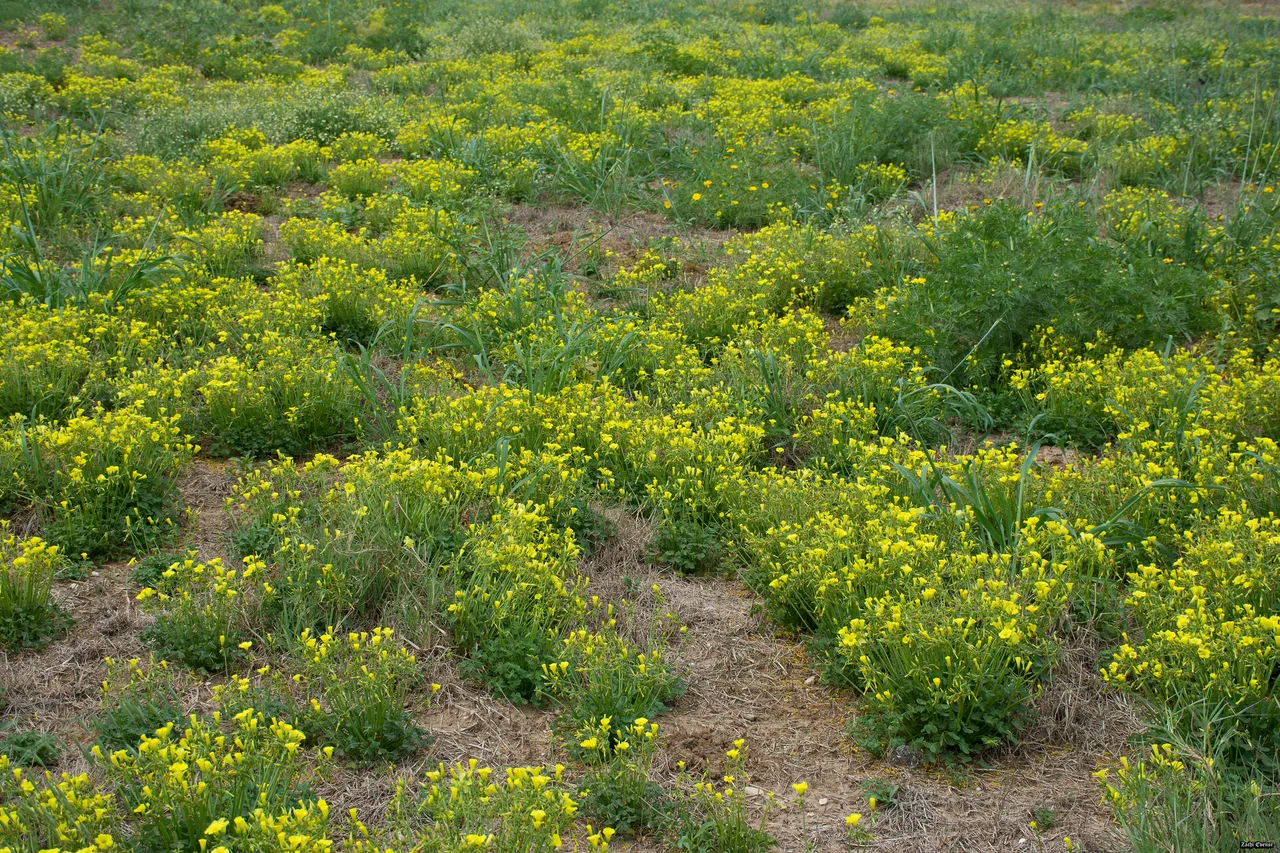
Searching for clover that tints landscapes.
On my walk yesterday morning I finally wanted to go after that „clover“ that I have been observing over my first two winters here in the mediterranean Portugal. Around the beginning of January you see it popping up everywhere with is prolific „peppered“ green leaves, covering what was once baked dirt after the long, hot and dry summers here. Later, in the beginning of February and until March its screaming yellow flowers turn the whole landscape into an exciting surreal experience. At times you think whole hills are an ocean of that vibrant color, which makes surreal perspectives.
I was busy taking leveral photos of the leaves and flowers, as I always love to determine my findings with an internet research and I was extremely surprised where that research lead me. Turns out it was no clover at all, but a perennial, edible, invasive bulp from across the mediterranean globe. It is Oxalis pes-caprae or also called wood sorrel, buttercub oxalis or sourgrass.

Wood sorrels Africam origin.
Wood sorrel originates from South Africas mediterranean climate and was most likely introduced to the island of Malta by Carlso Giacinto in the beginning of the 19th century. He was the curator of Maltas „Floriana“ botanical gardens at that time. From the island of Malte the plant then made an incredible travel around the globe to all mediterranean climates where it is often seen as an ivasive noxios weed.

Edible weed.
Buttercub oxalis is edible in all parts (flower, leaves, roots) for humans and all livestock. It aparently has a very nice fresh lemony taste, which makes it an great addition to salads and lemonades. Its taste also gives it one of its names: Sourgrass. I even read an article on the internet, where a person grows this „weed“ in a red variaty to sell it to restaurans as garnish and salad addition. I did not eat it myself yet, as I only found all these information out over night, but next time i see it on the fields I will definitely have a bite and bring some home for the family. Only warning by PFAF is that upon consumption of great quantities the plants „[...]oxalic acid can bind up the body's supply of calcium leading to nutritional deficiency.“
Soil and reproduction.
It is no nitrogen fixer as I suspercted due to its „clover“ looks an it loves to grow in compacted soil. Oxalis pes-caprae does not even need to reproduce via seed, as it can expand through subterranean propagules. In Summer it goes completely dormant, where only the bulbs in the ground stay alive to flush right when the days get longer after the fisrt long rainy month.

